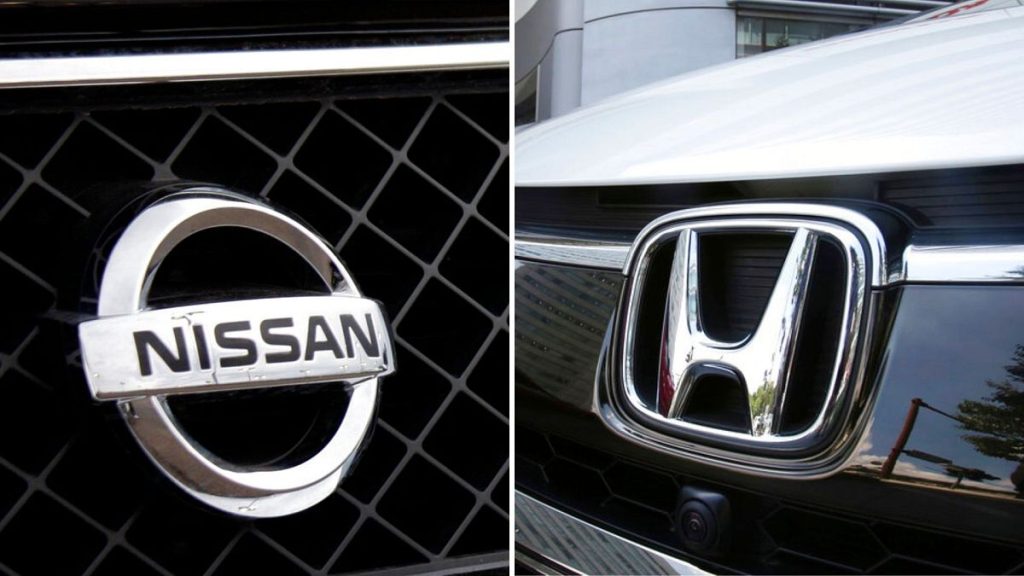Paragraph 1: Initial Merger Speculation and Market Reaction
Reports emerged suggesting a potential merger between Japanese automakers Nissan and Honda, potentially creating the world’s third-largest car manufacturing group. These rumors fueled a dramatic surge in Nissan’s share price, marking its most significant single-day increase in the past 50 years. Conversely, Honda’s share price experienced a decline, indicating investor uncertainty regarding the potential benefits of such a merger for Honda. The speculation extended to include Mitsubishi, a member of the existing Nissan alliance, and similarly propelled its stock price upwards. This market volatility underscored the significant implications of a potential merger within the Japanese automotive landscape.
Paragraph 2: Clarification and Existing Collaboration
Following the market upheaval triggered by the merger rumors, Nissan and Honda jointly issued a statement clarifying their position. While they acknowledged ongoing discussions regarding potential collaborative efforts, they explicitly denied any concrete merger plans. This clarification served to temper the initial market excitement. Notably, the companies had already established a framework for collaboration, particularly in the realm of electric vehicle (EV) component sharing and autonomous driving software research. This existing partnership, announced earlier in the year, highlighted their commitment to navigating the evolving automotive landscape, marked by the rise of electrification and the increasing importance of advanced technologies.
Paragraph 3: Potential Benefits of a Merger
A hypothetical merger between Nissan, Honda, and Mitsubishi would create an automotive giant, significantly increasing their combined market capitalization. This consolidation would offer several strategic advantages, particularly in the face of increasing competition from both established global players like Toyota and Volkswagen, as well as emerging Chinese automakers. A larger scale of operations would allow for greater economies of scale, potentially reducing production costs and enhancing competitiveness. Furthermore, pooling resources could accelerate the development and deployment of new technologies, crucial for navigating the transition to electric vehicles and autonomous driving.
Paragraph 4: Challenges and Current State of the Companies
The potential merger discussions arise amidst challenging circumstances for both Nissan and Honda. Nissan, currently entangled in a complex alliance with Renault, has recently announced significant job cuts and production capacity reductions in response to financial losses. The company is undergoing a restructuring process, including a management reshuffle and executive pay cuts, aimed at improving efficiency and responsiveness to market demands. Honda, too, has faced headwinds, with reported profit declines attributed to weaker sales performance, particularly in the Chinese market. These existing challenges underscore the impetus for exploring strategic collaborations to strengthen their respective positions.
Paragraph 5: Industry Context and Competitive Landscape
The automotive industry is undergoing a period of significant transformation, driven by the shift towards electrification, the emergence of autonomous driving technologies, and the growing influence of Chinese manufacturers. This dynamic landscape necessitates strategic adaptations from established automakers. While a merger could potentially empower Nissan and Honda to better compete within this evolving market, it also raises questions about the complexities of integrating distinct corporate cultures and operations. Furthermore, the existing alliance between Nissan and Renault adds another layer of complexity to any potential restructuring.
Paragraph 6: Production Figures and Market Positioning
Considering the 2023 production figures, Toyota’s dominance within the Japanese automotive market is evident, significantly outpacing both Honda and Nissan. Even if a merger were to occur, Toyota would retain its leading position. However, a combined Nissan-Honda-Mitsubishi entity would represent a formidable competitor, potentially reshaping the competitive dynamics within the industry. Mitsubishi’s relatively smaller production volume, while contributing to the combined scale, underscores the primary focus on the integration of Nissan and Honda’s operations in any potential merger scenario. This consolidation could significantly alter the global automotive landscape and enhance the Japanese automakers’ ability to navigate the ongoing industry transformation.














